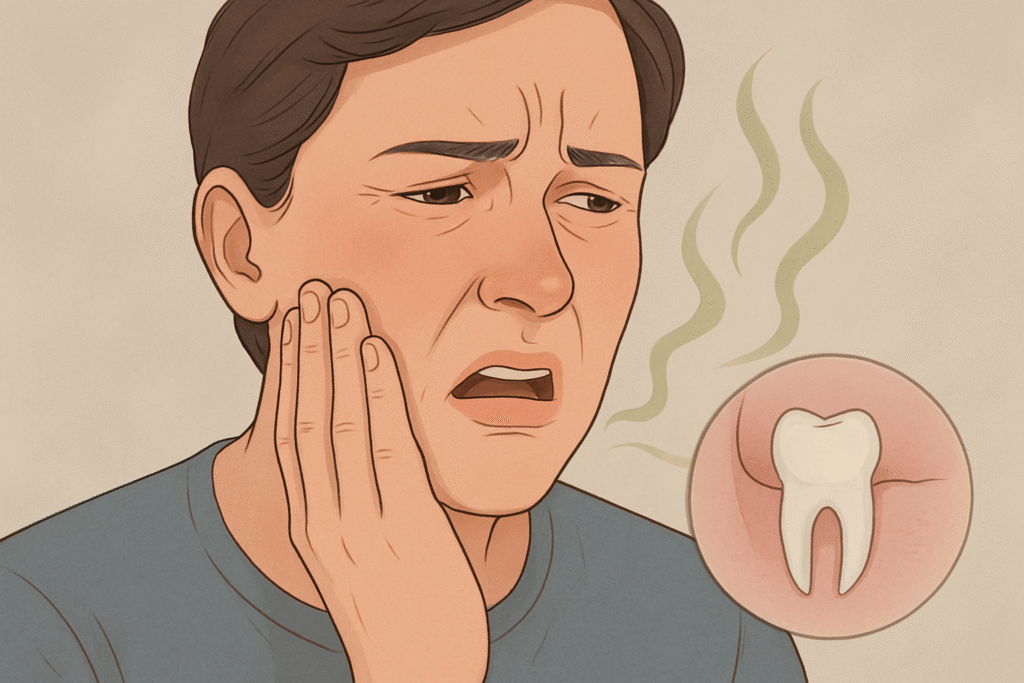
Have you ever wondered, “why your canine teeth often appear more yellow than other teeth?” Many individuals observe this common dental issue, which can leave them feeling self-conscious about their smile. The key fact lies in the natural structure of our teeth. The enamel, which covers the tooth, is naturally translucent, allowing the dentin—a yellowish substance underneath—to show through, especially in canines, which have a thicker layer of dentin than other teeth. This structural difference makes the yellow tone more pronounced, even with consistent oral care.
While brushing and flossing often are essential, they don’t always rid teeth of stubborn discoloration. At Dental verity, the dedicated team focuses on educating patients and providing exceptional treatments to help improve their smile. From in-depth exploration of causes to revolutionary tooth whitening options, there are many ways to unveil the secrets behind discoloured canines and restore confidence. With the right tips and care, it’s possible to manage these concerns together effectively.
What Are Canine Teeth?
Canine teeth, often referred to as K9 teeth, are unique because they have a single point, giving them a distinct shape. These teeth are located on either side of your upper and lower incisors and are known for being sharper and more pointy when compared to other teeth. Adults typically have four canine teeth, and when they are fully erupted, you can see them next to the outermost incisors while smiling in the mirror. Their placement and structure make them essential for tearing food efficiently.
Why Are Canine Teeth Important?
Canine teeth, also called cuspids, have evolved from our hunter-gatherer ancestors, who relied on them to grip and tear food, much like carnivores and other meat-eating animals. Over time, as human diets and lifestyle habits changed, these teeth became smaller and are no longer as large as they were in ancient times. A fun fact is that humans once had larger canine teeth, which were essential for survival, but as we no longer need to hunt, their role has shifted. However, they still play a vital part in biting and eating efficiently today.
Why Do Canine Teeth Look Yellow?
Canine teeth can turn yellow due to a combination of factors, such as consuming dark-coloured foods like berries or soy sauce and beverages such as coffee or tea. Smoking and poor oral hygiene are also major contributors, as they allow stains to settle and weaken the enamel, leading to its wear over time. This common cause of yellowing is often linked to habits that gradually affect the appearance of teeth, making them harder to maintain without consistent care.
How Dark Foods and Drinks Affect Canine Teeth
Eating and drinking certain dark-coloured items is a major cause of yellow teeth, especially in the canine area. Foods like berries, soy sauce, and beetroots, as well as beverages such as coffee, tea, red wine, and cola, can leave stubborn stains on teeth over time. These culprits contain intense colour pigments, known as chromogens, which attach to the enamel, causing long-lasting stains. Without proper care, these pigments can penetrate deeper, affecting the dentin underneath. Even with regular brushing, it may be hard to remove these stains entirely, especially if compounded by smoking or tobacco, which adds nicotine-induced yellowing or brownish tints.
How Smoking Impacts Canine Teeth
Smoking and tobacco use are significant reasons for the yellowing of canine teeth. The nicotine and tar in these substances cause stubborn stains that are hard to remove. They also reduce blood flow to the gums, affecting oral health over time. The chemicals in tobacco contribute to plaque and tartar buildup, leaving teeth discoloured despite regular brushing. The direct contact of these harmful substances with the front, prominent teeth used for tearing food makes the impact more noticeable. Quitting smoking is crucial for overall health and for maintaining a bright smile.
How Neglecting Dental Care Affects Canine Teeth
Poor oral hygiene, such as infrequent brushing and flossing, leads to a buildup of plaque and tartar on your teeth, causing tooth discolouration over time. This is a common reason for the yellowing of canine teeth. Neglecting proper dental care allows stains from dark-coloured foods and beverages to linger on the enamel, further contributing to their yellow appearance. Maintaining good hygiene by brushing and flossing regularly is essential for preventing and reducing these issues. As we move forward, let’s explore the impact of smoking and tobacco on dental health.
Effective Solutions for Yellow-Toned Canine Teeth
If you have singular or multiple yellow-toned teeth, especially canines, and it’s a cosmetic concern, there are several affordable treatments you can consider. At clinics like Dental verity, options include luxury treatments such as professional whitening, which can be done through in-chair treatment performed by a dentist or with take-home kits. For more lasting solutions, porcelain veneers or CEREC crown restorations may help enhance your smile while addressing the discoloration effectively.




